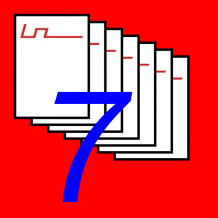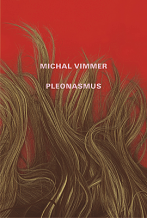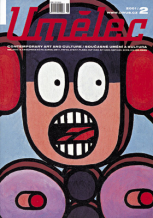| Umělec 2010/1 >> Don’t be a prisoner of your own world | Просмотр всех номеров | ||||||||||||
|
|||||||||||||
Don’t be a prisoner of your own worldUmělec 2010/101.01.2010 Ludvík Hlaváček | eternal recurrence | en cs de |
|||||||||||||
|
This past February, a symposium was held at Prague‘s Academy of Fine Arts (AVU) not only as a forum to discuss the neglected state of the Czech Republic‘s foremost centre of higher education in the arts, but also as a call for concrete steps towards its reform. At roughly the same time, a conference was called in neighboring Slovakia to bring attention to the parochial, backward Slovak National Gallery, as well as to vent frustration at the eternally delayed project to create a Slovak artistic institution along the lines of a “Kunsthalle.” The Slovak initiative that organized the conference, Twenty Years Since the Velvet Revolution Didn't Pass, has a name that could apply just as well to their Czech counterparts. After two decades of transformation in both countries, we have the opportunity to re-evaluate to what extent historical expectations have been fulfilled and to what extent today’s creative institutions reflect the times, as well as to re-address basic questions about the meaning of art in today’s society. That’s why we’ve decided to print one of the submissions to the Prague symposium: its message is not merely personal or technical, but universal. Palo Fabuš
Not long ago, at a private event, the hostess introduced my appearance like this: “Ludvík Hlaváček has prepared for us a talk with a provocative title: Modern art – why and what for.” I was surprised, so I asked: “Why is that a provocative title?” She immediately answered: “Well, because we know what art is for – for joy.” I was tempted by such a disarming response to pronounce my lecture completely unnecessary. Fortunately, I quickly realized that although joy is a good reason, it’s a bit too general. And there are other problems with such a blanket statement. Such as the question of financing art: are we to believe that the purpose of the millions given to schools such as this one is to bring joy? And there’s the question of so-called public art, and all those special categories that cropped up in the ‘70s: political art, feminist art, ecological art, and others, where the artistic perspective becomes intertwined with a particular social movement. These artistic movements deal with serious questions that reach far beyond our private world, and so beyond the sphere where joy happens. Apparently, art isn’t merely a private affair, but closely linked with the structure of society and its institutions, with politics, science, culture, with concerns about the environment, and so on. My own experiences with public art show that among Czechs, social consciousness is not held in high esteem. For us, even the term “public art” has a negative connotation that the underlying idea doesn’t. Could this negative attitude to “public” stem from our political past, when everything was taken care of for us either by the good emperor or by party bureaucrats? Or perhaps it’s due to proximity to Russia, where democratic institutions and civil responsibility are virtually unheard of? Like joy, the word beauty is both fitting, and at the same time, too broad. Is this a word that can justify investments worth millions? And does this word, in fact, still have any meaning? In my opinion, it does, and discovering this meaning is far more important than academic debates about appropriate mediums of expression (painting – draft) or focusing instead on how labor- and time-intensive making art is. Beauty is an experience, and, if we can know anything about it, then we know that it has an inextricable physical manifestation, like getting a chill. When we experience beauty, it is our bodies that shiver, and not the thing before us; this tells us the direction where we look to find beauty. Critical essays tell us that ever since the time of Duchamp, artwork has been essentially thought. But it’s not so! Artwork was and always has been thought, throughout the history of creative art. The Venus of Dolní Věstonice, or Michelangelo’s David, just like Duchamp’s bottle rack, or Kovanda’s matchboxes, are not comprehensible as artwork without considering them as an aggregate of ideas, ideals, desires, opinions, attempts to understand the world, to encapsulate its order, to catch a glimpse of the meaning of life. Even if art consists for the most part of a spontaneous subject matter, that is, content formed by feelings rather than by rational considerations, it just goes to show that what we call “artwork” exists primarily in our minds. It isn’t until the idea interacts with a tangible material, such as a painted canvas, that a work can come to life and, with it, evoke a sense of beauty. Up until the democratic revolution of the 18th century, Europeans had a very clear idea about what beauty was. Thanks to the socio-forming notion of God, which in one coherent system unified reason and emotion, society and individual, both the harmonic social hierarchy and the validation of beauty were guaranteed. Afterwards, though, when everything around us was recognized as a work of mankind, the authority of the social and aesthetic system was rendered problematic. Instead of merely confirming the divinely-granted social order, art took on a completely new role: the role of critic. From Baudelaire up through you, and, we hope, even through future students, art’s task has been to cast doubt on the status quo and its norms, to shows its limits and to bring new models of thought. By this means it will demonstrate mankind’s role as creator: that we construct our own reality and that we’re not simply thrust into into a situation created by someone else. I often experience beauty personally, including its accompanying physical symptoms. The feeling can be inspired by the images of today’s painters, as well as various conceptual works. In each case, the one constant of that experience is the feeling of newness. The feeling that I am a witness of the birth of something new. The thing being born not only demolishes my pre-existing assumptions, but at the same time fills me with joy by showing me that I am part of history, that I am alive. I’m convinced that this is evidence of the fact that the world is not a final draft, but that it is always progressing, and that just beyond its edges lurk secrets, expectations and surprises. And that is a kind of joy that is worthwhile to invest millions in: it makes a difference if governments rule a world inhabited by people, or if they simply direct a system of programs whose steps are carried out by passive robots. I think that it’s the duty of an experienced pedagogue to ensure that every student has acquired not only skill in his craft, but an experience in the practice of freedom, as well. It’s a difficult task, because human freedom is an elusive affair. We always have the feeling that we’re free in our own worlds, before we reach a higher ground and discover new habits, new doubts, new goals. This is possibly the essence of the current debate in schools. Some people feel that after the Velvet Revolution, schools placed limits on freedoms and became satisfied with themselves. That satisfaction led to less exercise of freedom and eliminated the possibility of responding to new horizons that, whether we want them to or not, appear both within the current bounds of art and beyond its (apparent) borders. Older people, I believe I have the right to claim, suffer a limited ability to react to new possibilities; schools, however, should not age as people do. There’s a difference between the artist as an individual and a collective, such as a school. There’s nothing wrong with a particular artist having personal limitations: another person will gladly enter the artist’s world and take delight in what he finds there. Schools are different. There, being closed into one’s own world is harmful. You’ll have to decide for yourselves whether or not that’s your case. Translated from Czech by Jeff Epstein.
01.01.2010
Рекомендуемые статьи
|
|||||||||||||
|
04.02.2020 10:17
Letošní 50. ročník Art Basel přilákal celkem 93 000 návštěvníků a sběratelů z 80 zemí světa. 290 prémiových galerií představilo umělecká díla od počátku 20. století až po současnost. Hlavní sektor přehlídky, tradičně v prvním patře výstavního prostoru, představil 232 předních galerií z celého světa nabízející umění nejvyšší kvality. Veletrh ukázal vzestupný trend prodeje prostřednictvím galerií jak soukromým sbírkám, tak i institucím. Kromě hlavního veletrhu stály za návštěvu i ty přidružené: Volta, Liste a Photo Basel, k tomu doprovodné programy a výstavy v místních institucích, které kvalitou daleko přesahují hranice města tj. Kunsthalle Basel, Kunstmuseum, Tinguely muzeum nebo Fondation Beyeler.
|






























 We Are Rising National Gallery For You! Go to Kyjov by Krásná Lípa no.37.
We Are Rising National Gallery For You! Go to Kyjov by Krásná Lípa no.37.
Комментарии
Статья не была прокомментированаДобавить новый комментарий